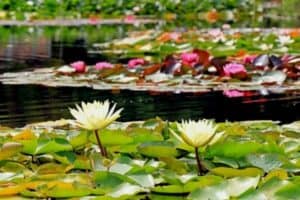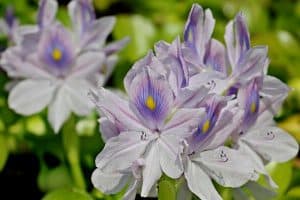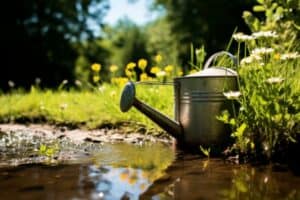Floating pond plants are great for enhancing the appearance of your backyard pond, while also increasing oxygen and reducing algae growth.
Here are 7 easy to grow floating aquatic plants to consider adding to your pond.
Most of these plants are fast growing so they’ll need to be thinned out regularly to stop them overtaking your pond.
Important note: In certain areas, some of these plants are classified as weeds due to their invasive growth. Check with your local authority before adding these plants to your pond.
This post about floating plants for ponds contains affiliate links. Please read the disclosure for more info.
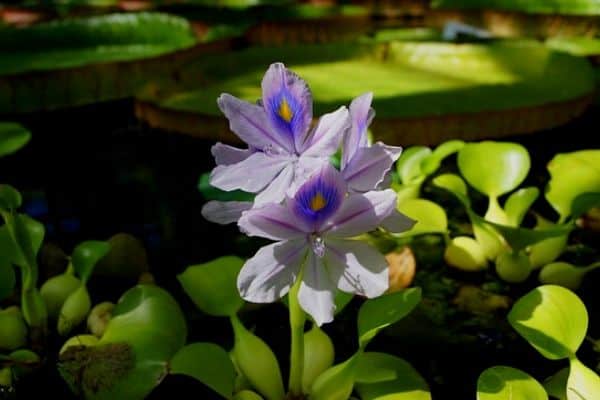
Benefits of floating pond plants
Floating plants drift on the surface of the pond and get their nutrients from the water, so they don’t need to be planted in soil.
They absorb excess nutrients in the pond that can lead to algae blooms and provide shade and a place for fish to hide from predators like birds and cats.
Floating aquatic plants also help to oxygenate the pond water, which is especially beneficial during the summer months when oxygen levels decrease as the water warms up.
7 BEST FLOATING PLANTS FOR PONDS
1. Water Hyacinth (Eichhornia crassipes)
Water Hyacinths are one of the most popular floating pond plants.
They’re extremely fast growing perennials with beautiful purple flowers that appear from late summer to early fall
Each plant produces about 20 flower stalks so you’ll have an abundance of flowers.
Water Hyacinths can be grown as annuals in areas with cold winter temperatures and the plants can be removed from the pond before winter and composted.
In warm climates Water Hyacinths can multiply rapidly and form a thick mat on top of the water which will eventually lead to fish kills, so they need to be cut back regularly.
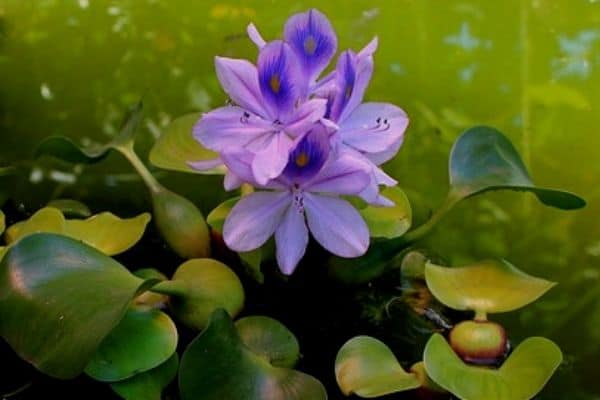
2. Water Lettuce (Pistia stratiotes)
Water Lettuce is another type of floating pond plant with thick green leaves in a rosette shape resembling a lettuce.
The flowers are small and hidden in the centre of the plant in amongst the base of the leaves.
Water lettuce is not as fast growing as Water Hyacinths but they can form a dense mat on top of the pond if left to grow unchecked.
Water lettuces are non-hardy, so they’ll die off when temperatures fall below 64°F (18°C).
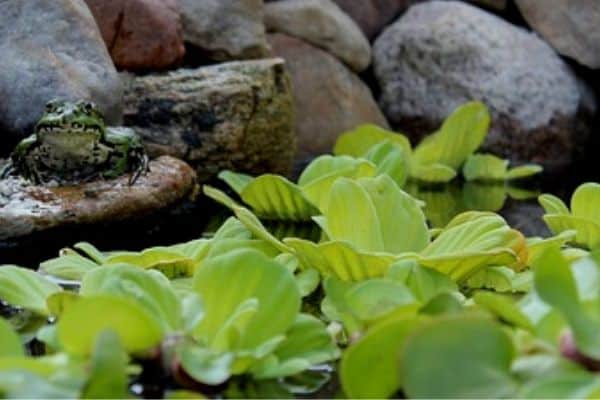
3. Duck weed (Lemna minor)
Duck weed is a tiny plant that will spread out to cover the surface of the pond.
It’s a nutritious food source for ducks, tadpoles, turtles and fish.
Duck weed will grow in shallow ponds, but it needs plenty of room to spread out.
It’s a helpful plant for reducing algae overgrowth because it shades the pond. [1]
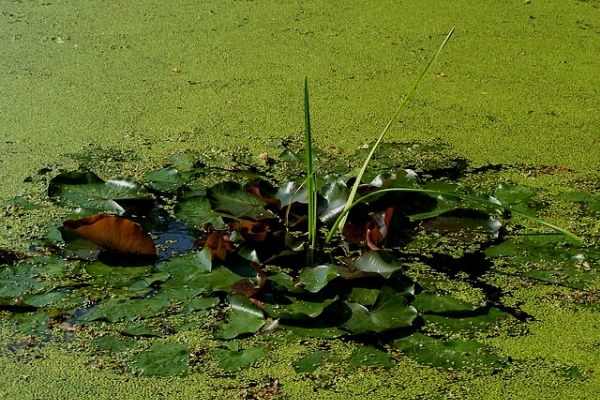
4. Azolla (Azolla filiculoides)
Azolla, also known as mosquito fern, is an attractive floating pond plant.
The leaves are normally green, but when it’s grown in a pond that receives full sun, the leaves can turn red or pink.
Azolla is helpful for removing pollutants in the water, including heavy metals and it discourages algae growth.
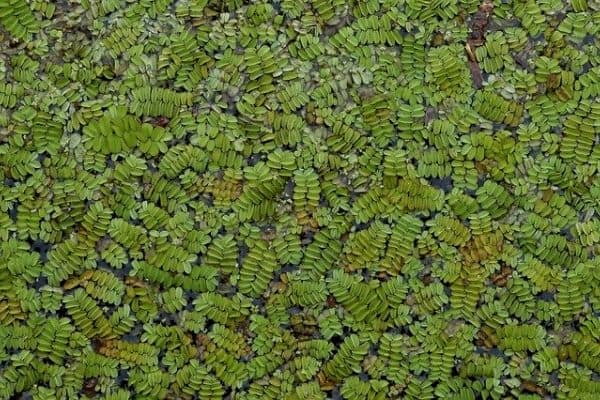
5. Frogbit (Limnobium Laeviatum)
Frogbit is a popular plant for ponds and aquariums.
The round leaves lie flat on the water when the plants are young, but as they mature, the leaves become emergent above the water.
It’s important to ensure that the top of the leaves stay dry because they will rot if they’re wet for an extended period of time. [2]
Frogbit spreads out quickly, so it will need to be regularly thinned out to prevent it covering the entire surface of the pond.
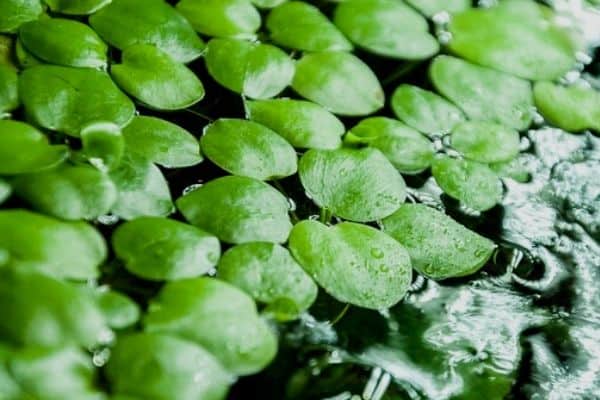
6. Salvinia (Salvinia adnata)
Salvinia is an attractive floating fern that helps to prevent algae by shading the pond and using up nutrients in the water.
It’s fast growing and can double in size every two days so it can quickly become overgrown.
Salvinia will need to be trimmed back regularly to prevent it covering the entire surface of the pond.
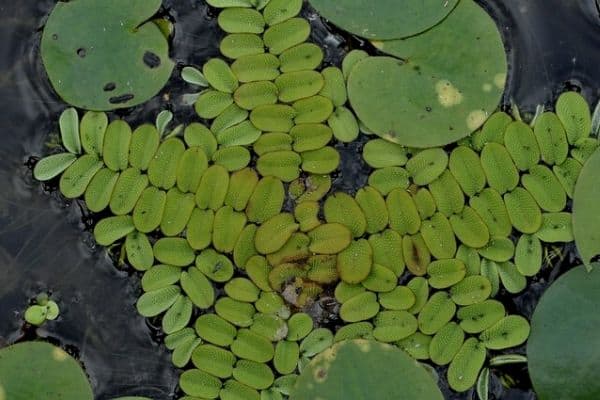
7. Sensitive Plant (Neptunia oleracea)
Sensitive plant is a tropical, floating aquatic plant that produces small, yellow flowers during summer.
The fern-like leaves curl inwards when they’re touched, which is how it gets its name.
It’s best to situate sensitive plants away from waterfalls and fountains so that the leaves don’t stay curled up.
Sensitive plants are beneficial to the pond by adding nitrogen back to the pond and reducing algae growth.
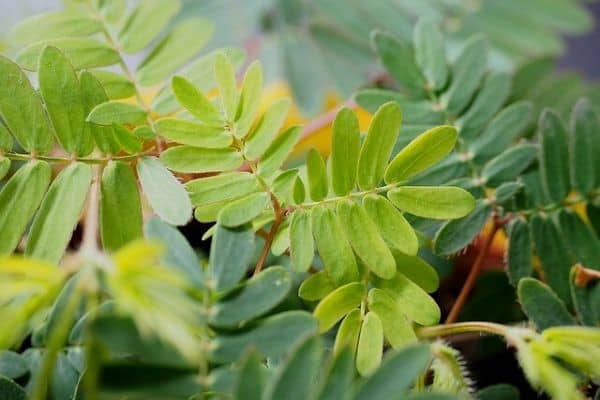
Disposing of floating plants
Many of these floating plants are classified as noxious weeds due to their ability to overtake entire waterways in a short amount of time.
Always dispose of plants and cuttings carefully so that they don’t end up in waterways.
They can be composted, used as mulch or bagged up and placed in the bin.
So there are 7 floating plants to consider adding to your garden pond.
A combination of floating plants, submerged plants and bog plants will complete the look of your pond, while also improving the natural pond ecosystem.
RELATED ARTICLES
- 10 Best Bog Plants For Ponds
- How To Overwinter Pond Plants
- 10 Flowering Pond Plants
- 6 Edible Water Plants
- 10 Tropical Pond Plants
Which of these floating pond plants do you like best? Let me know in the comments below.
Are you on Pinterest? I have boards dedicated to Pond Plants and Water Gardens that you may find interesting.
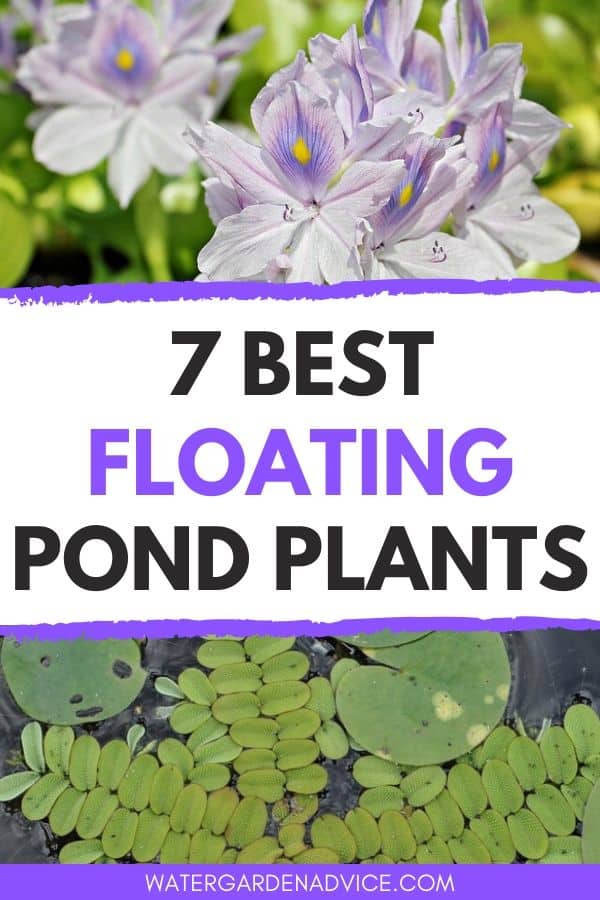
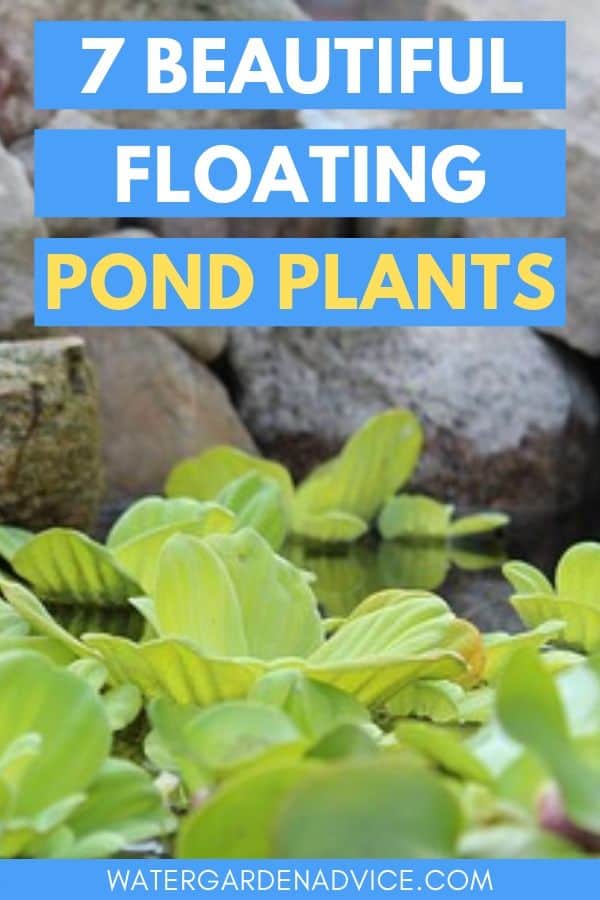
Also, check out the Must-Have Pond Products page where I list the essential pond products to make life as a pond owner much easier!

